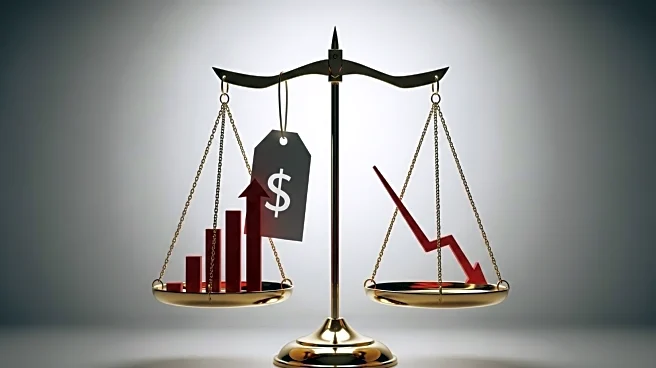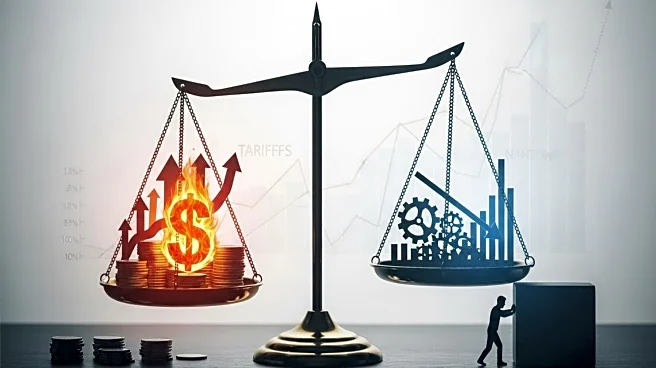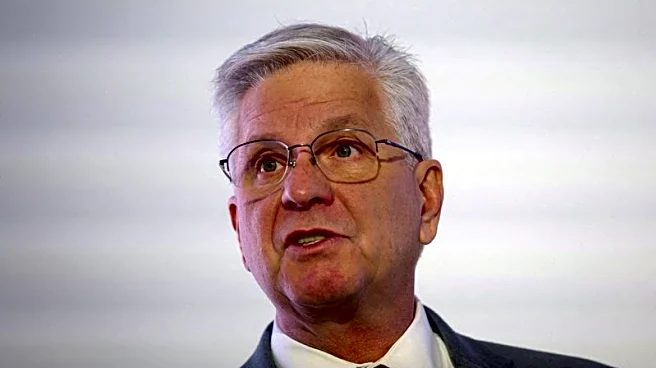What's Happening?
The Federal Reserve is grappling with a challenging economic environment as core PCE inflation for July 2025 increased to 2.9% year-over-year, marking the highest level since February 2025. This rise in inflation, driven by tariff-induced price pressures and persistent services-sector inflation, has led to a cautious approach regarding interest rate cuts. The Federal Open Market Committee (FOMC) minutes reveal a division among members, with some advocating for rate cuts to support employment, while others caution against premature easing that could entrench inflationary expectations. The Fed's dilemma is how to manage a slowing economy without reigniting inflation.
Why It's Important?
The persistence of inflation above the Federal Reserve's 2% target is significant as it influences monetary policy decisions that affect the broader U.S. economy. The Fed's cautious stance on rate cuts impacts market expectations and investor confidence. A delayed easing cycle could prolong high borrowing costs, affecting sectors reliant on consumer discretionary spending. Conversely, sectors with pricing power, such as technology and healthcare, may benefit from the current environment. The Fed's decisions are crucial for maintaining economic stability and preventing inflation from spiraling, which could have widespread implications for businesses and consumers.
What's Next?
Markets are currently pricing in an 87% probability of a 25-basis-point rate cut at the September meeting, indicating a disconnect between market expectations and the Fed's cautious approach. Investors are likely to focus on sectors with structural growth and pricing resilience, such as technology, healthcare, and financial services. The Fed's future actions will be closely monitored, as they will influence economic conditions and investor strategies. The central bank's ability to balance growth and inflation will be critical in maintaining its credibility and ensuring economic stability.
Beyond the Headlines
The Fed's cautious approach highlights the complexity of managing monetary policy in a high-inflation environment. The decision-making process involves weighing the risks of inflation against the need to support employment and economic growth. The Fed's actions have broader implications for global economic stability, as U.S. monetary policy influences international markets and investor sentiment. The ongoing debate within the FOMC underscores the challenges of navigating economic uncertainties and maintaining a balanced approach to monetary policy.












